The Strange Pocket of Modern Houses in Virginia that Were Considered Communist
At one time, a glass house was suspected of being a red house.

A house designed by Charles M Goodman in Hollin Hills, Virginia. (Photo: Clarissa Peterson/CC BY-SA 3.0)
“Virginia is for Lovers” reads the sign as you head south across the Potomac River from Washington D.C.
Not for lovers of architecture though.
The suburbs that surround the capital city contain some of the most uninspired housing ever to have dribbled from an architect’s mechanical pencil. Mile after mile of undifferentiated Colonial Revival houses stand parallel to the street, their yard dimensions unchanging, their buzz-cut front lawns giving off a disturbing nitrogen glow. Why is the affectionate state’s housing so impotent, so sterile?

Well, not all of it is. Just as you’ve abandoned all hope and are desperately trying to negotiate an escape, a dramatic shift takes place. Turn off a main road just north of George Washington’s old home at Mount Vernon and it feels as if an enchantment has fallen on the area. The land becomes heavily wooded and hilly. The road breaks free from the gridiron pattern and starts to meander along the land’s contours. Something glints in the sunshine, a glass house, and then another. Rectangular modernist houses, built low to the ground, reveal themselves hiding amongst the blossoms. This is the community of Hollin Hills—a mid-century modern utopia, a jewel box amidst lunch pails and, at one time, a terrifying threat to the American way of life.
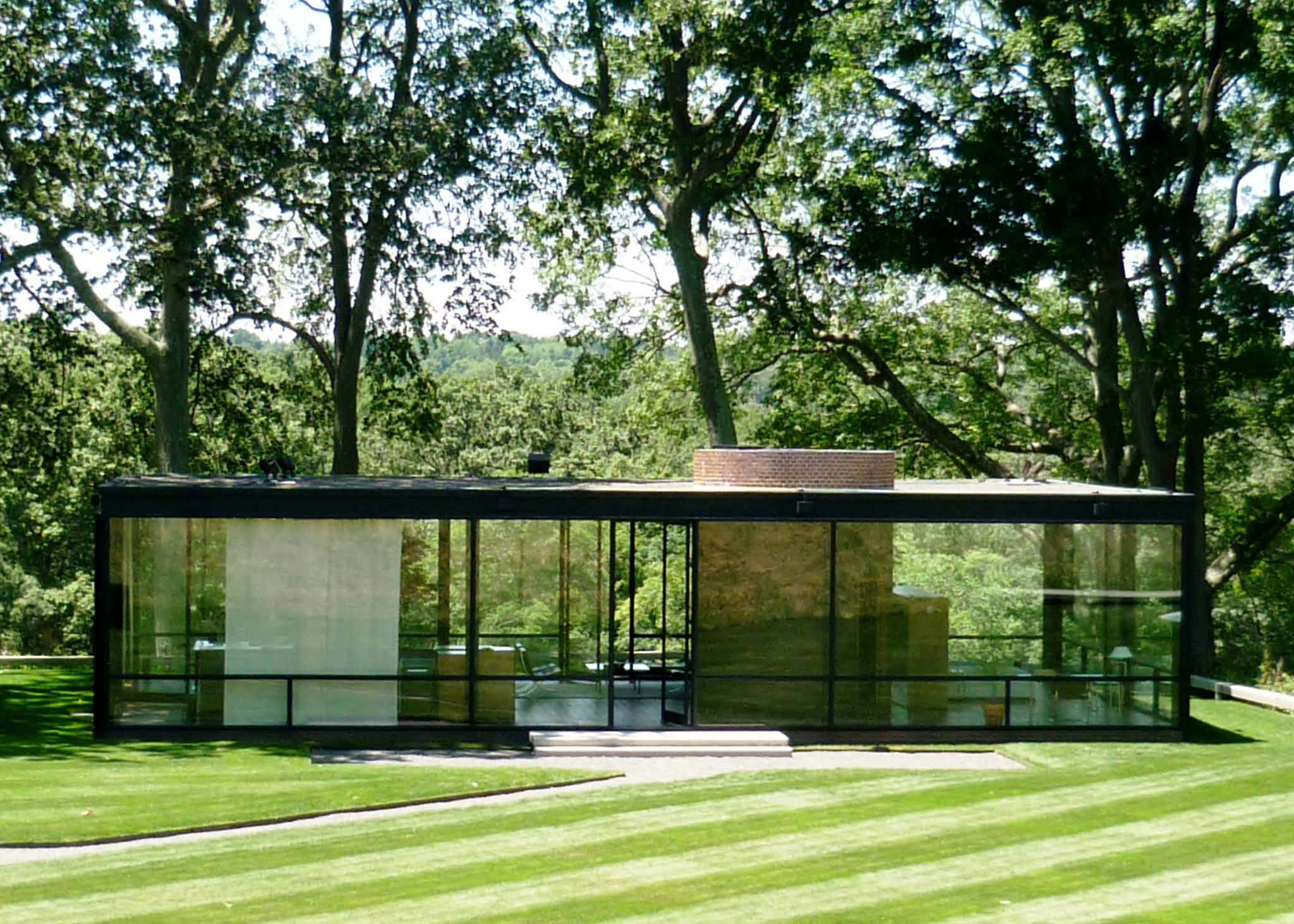
Philip Johnson’s Glass House in Connecticut. (Photo: Mark B. Schlemmer/CC BY 2.0)
The year these houses were built, 1949, was a banner one for Modernist architecture in America. While Europe had largely accepted the new style, the United States had yet to “embrace the box.” But then Philip Johnson’s Glass House was unveiled in New Canaan, Connecticut—its walls made only of sheet glass—and modernist architecture was thrust into the public consciousness. At exactly the same time in Hollin Hills the public was being thrust into modernist architecture.
Through the 1960s, some 450 ultra-modern houses were built across 300 acres of craggy Virginia land. These houses were not quite as extreme as Johnson’s but they carried with them many of the same Modernist precepts: flat or low-pitched roofs, open floor plans with movable interior partitions, and of course floor to ceiling windows. (You can see for yourself if you’re in the area for the 2016 Hollin Hills House & Garden Tour on Saturday, April 30th.) Glass was the essential quality of these buildings, and the minimal amounts of structural framing allowed it to be everywhere: you didn’t look at a Hollin Hills house, you looked through it. What’s more this was affordable housing, the brick salvaged from urban renewal projects, the wood trusses prefabricated. Modernism had finally come to the masses.
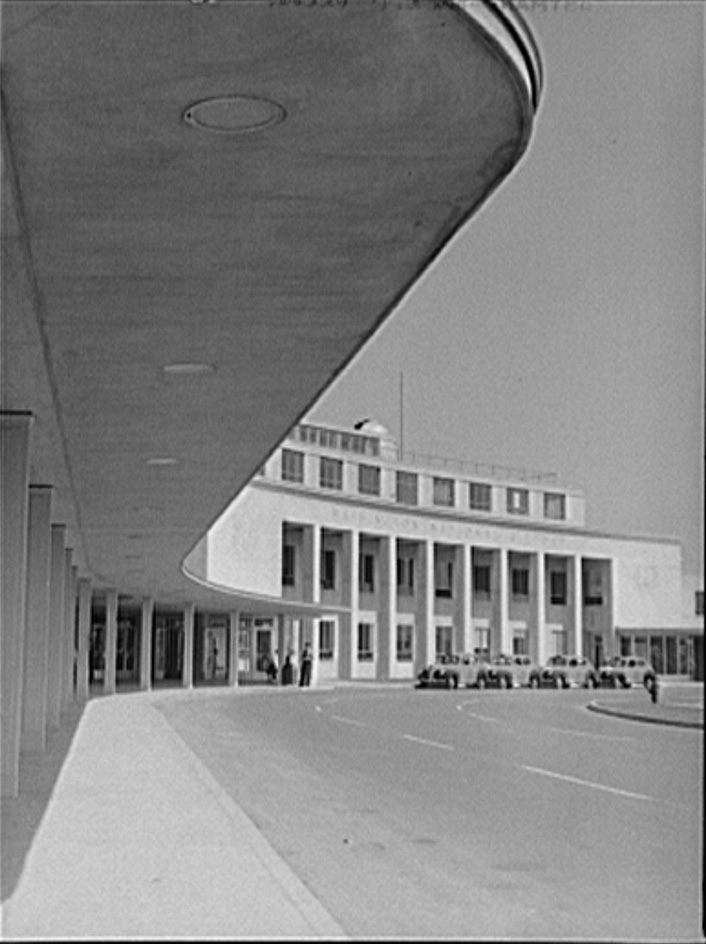
Washington Airport photographed in 1941, designed by Goodman. (Photo: Library of Congress/LC-USF34-045058-D)
The design of Hollin Hills was the brainchild of the architect Charles Goodman, who had previously designed nearby Washington National Airport. Just as radical as his designs was the site of the development. A normal developer would have attempted to bulldoze it flat, but Goodman chose to work with the shape of the land, carving roads along, not across, the slopes and hills, and fitting his houses around the old-growth trees. Goodman was adamant that people shouldn’t live on the landscape but should live in it. This sensitivity to place led to an eccentric pattern of homes, with some standing side-on to the road, others at an angle. Comparing it to other housing subdivisions at the time one critic called it “a jazz riff in place of a classical fugue.”
Indeed Goodman saw his housing as creating something more than just shelter: “The dignity of the individual can come about only by self-examination and creating a physical climate conducive to self-examination.
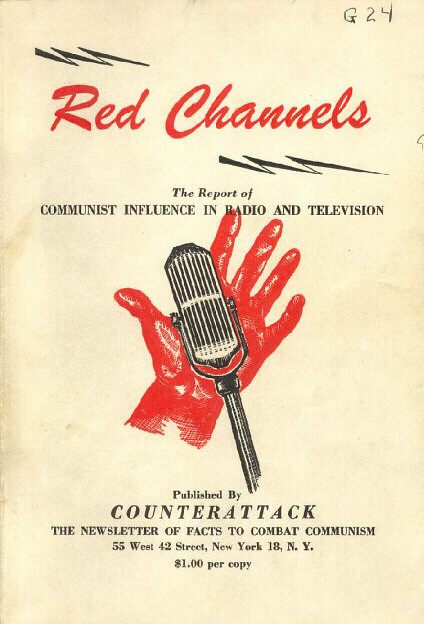
Red Channels, a 1950 publication claiming to report on “communist influence in radio and television”. (Photo: Public Domain)
Yet just as Johnson’s Glass House was sneered at for subordinating comfort to aesthetic pleasure, so were Goodman’s utopian pronouncements in the firing line. In 1953, Elizabeth Gordon, the imperious editor of the prestigious House Beautiful magazine, launched an astonishing, Trump-ish attack on Modernist design under the title, “The Threat to the New America.” Gordon warned of a conspiracy to subvert American taste in favor of “foreign” design. She saw the buildings of architects such as Johnson and Goodman as being “barren” and “grim” and attacking the very heart of American society - the home. “Two ways of life stretch before us,” wrote Gordon, “one leads to the richness of variety, to comfort and beauty. The other…to poverty and unlivability.”
As Greg Castillo’s essential Cold War on the Home Front spells out, Gordon viewed the clean open spaces of Modernist houses, the “less is more” aesthetic, as an affront to the post-war American mindset of abundance. Her insinuation that communist ideals lay behind these creations was all too clear, especially with Senator Joseph McCarthy’s ”Red Scare” running rampant at the time. She was not alone. Even the great American architect, Frank Lloyd Wright, declared purveyors of the style “not wholesome people.” In a perverse piece of logic the inhabitants of a glass house—by exposing themselves to the world so blatantly—clearly had something to hide.

Goodman’s Unitarian Universalist Church in Arlington, Virginia, which was built in 1964. (Photo: Ser Amantio di Nicolao/CC BY-SA 3.0)
And in some ways they were right. The architect and critic Michael Sorkin, who was born in Hollin Hills, declared it “decidedly pinkish from the first.” Attracted by the cutting-edge design and Goodman’s Emersonian philosophy, artists, musicians and architects helped turn Hollin Hills into a bastion of liberal values in the midst of an extremely conservative state. The author, Bernard Fall, lived there while writing Street Without Joy, a discouraging history of foreign involvement in Vietnam that became a foundational text for the anti-war movement. The singer Roberta Flack chose to live there at the height of her “Killing Me Softly” fame, as did Gil Scott-Heron, the “Godfather of Rap”, despite the fact that Virginia had fought racial desegregation tooth and claw. Dan Bishop, the Emmy Award-winning production designer for the TV show Mad Men, who also grew up there, recalled the suburb as being awash with “card-carrying hippies.” Hollin Hills became a cultured enclave, a preserve of sanity, a broadminded community fused together by its architecture. “Progressivism inhered in those glass walls,” recalled Sorkin.
Whether due to the House Beautiful attack, or simply because of the houses’ varying levels of functionality—all those glass walls meant they were often draughty and cold—Hollin Hills remained an outlier rather than a trailblazer. Yet even today, amidst the acres of tract housing, it remains a community apart, an emblem of what might have been, an alternative future that just happens to exist.











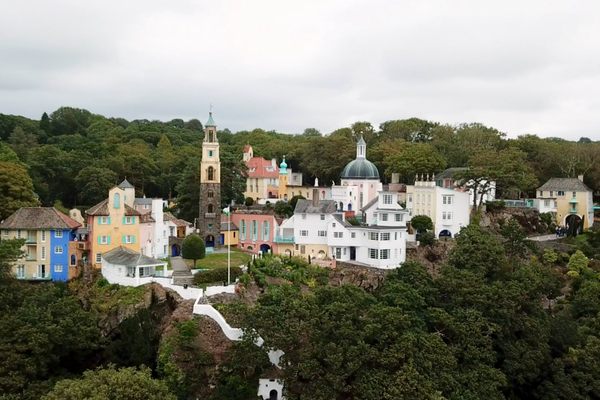

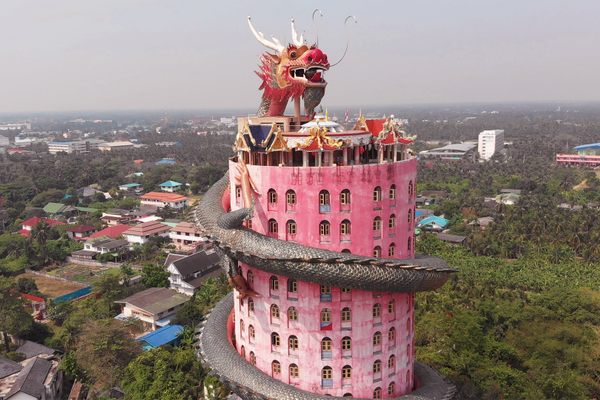

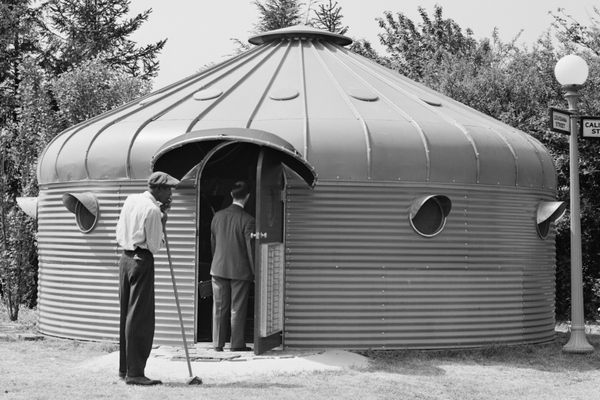

Follow us on Twitter to get the latest on the world's hidden wonders.
Like us on Facebook to get the latest on the world's hidden wonders.
Follow us on Twitter Like us on Facebook